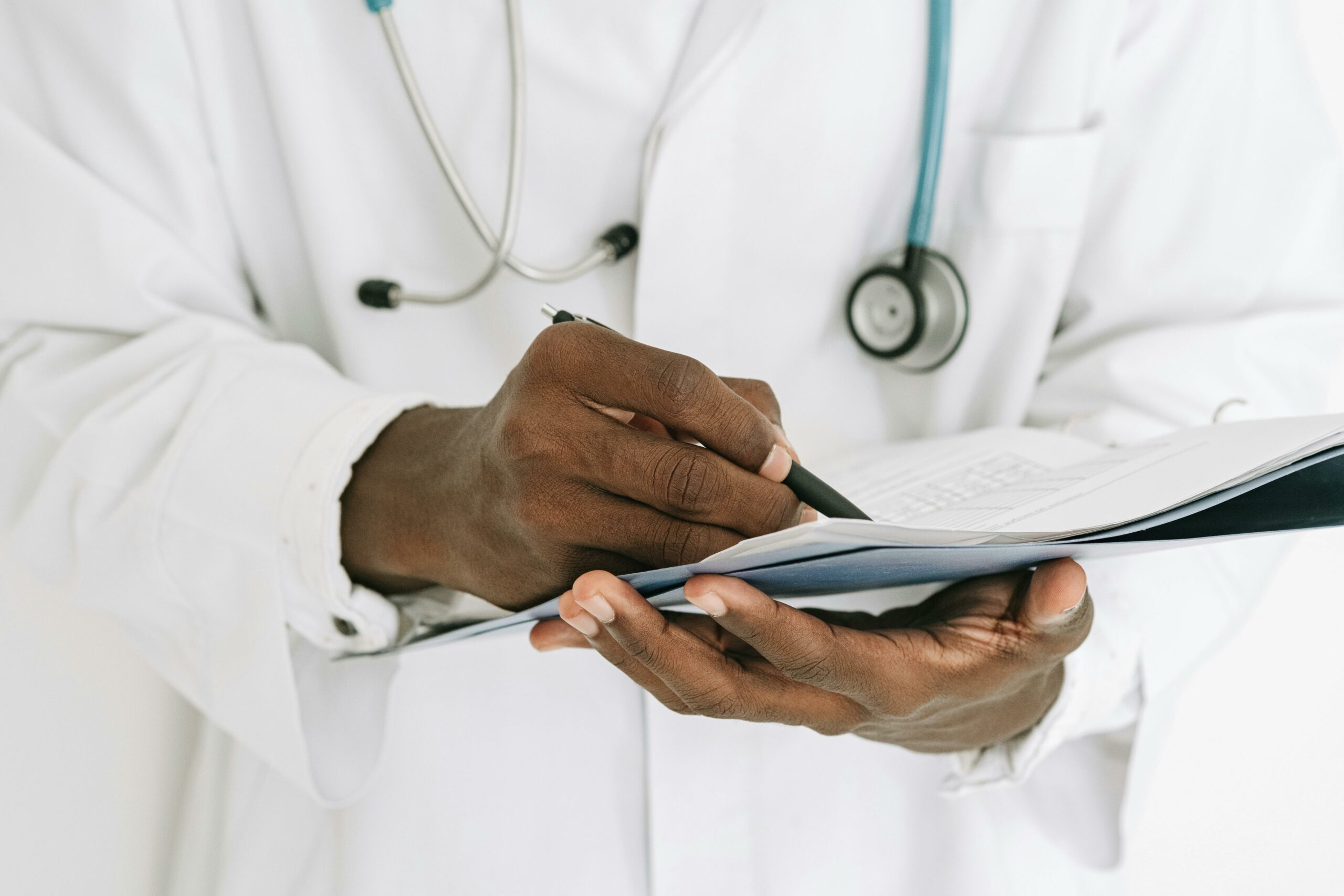
Roche provides an update on tominersen: What’s next for this huntingtin-lowering drug?
Roche gave an update this week about GENERATION HD2, testing the HTT-lowering drug tominersen in people with HD. The trial is continuing, but only the higher dose will move forward. What does this update mean for the HD community and this trial?


This week, we heard an update from Roche about their huntingtin-lowering therapy, tominersen, currently being tested in the GENERATION HD2 trial. An independent data monitoring committee (iDMC) that regularly reviews all of the data from the trial recently held their scheduled meeting and made a recommendation to modify the trial design. To cut to the chase and set everyone’s mind at ease – the trial is continuing and there are no major safety concerns. Tominersen still appears to be well tolerated but there are some changes to the trial in regards to the dosing of the drug that the community should know about. Let’s get into it.
Recap – what is tominersen and how does it work?
Tominersen is an experimental drug developed by Roche that is designed to treat Huntington’s disease (HD) by targeting the root cause of the condition: the huntingtin (HTT) gene. People with HD inherit a version of this gene with a mutation at the beginning that leads to the production of a faulty version of the HTT protein. Making this faulty protein is thought to cause damage to brain cells, leading to the progressive symptoms of HD.

One approach being tested in the clinic currently to treat HD is HTT lowering. There are many different HTT-lowering approaches that various companies are testing out, all of which aim to reduce the amount of HTT protein produced in the brain. The idea is simple: if we can reduce levels of the harmful form of the HTT protein made in people with HD, we may be able to slow or even stop the disease’s progression.
Tominersen is a type of therapy known as an antisense oligonucleotide (ASO). These are short strands of synthetic genetic material that bind to the messenger RNA (mRNA) instructions that cells use to make the HTT protein. Once bound, the ASO causes the message to be destroyed, leading to lower levels of the HTT protein overall. Unlike gene therapy approaches, ASOs don’t permanently alter DNA, so their effects wear off over time. While this means that repeated dosing is required, it also means that the dosing of the ASO can be adjusted as needed.
How did we get here with tominersen?
Roche’s tominersen program has had a winding road. Initial trials showed encouraging signs, but a Phase 3 study called GENERATION HD1 was halted early in 2021 after an iDMC found that the safety risks outweighed any potential benefits in the group of trial participants being assessed.
However, an after-the-fact investigation of the data generated in this trial, known as a post hoc analysis, suggested that certain groups of participants, particularly younger individuals with less advanced disease and lower CAG numbers, might benefit from a lower or less frequent dose.
The best way to prove that the findings from the subgroup analysis were real was to do another trial. So even though this trial didn’t give us the results we had hoped for, this important finding sparked renewed interest in studying tominersen and the launch of a new trial called GENERATION HD2.
What was different in the new trial?
“Tominersen continues to appear safe and the trial is continuing.”
GENERATION HD2 has completed enrollment with 301 participants in total. Everyone in the trial is being dosed every 16 weeks over the course of 16+ months. The cohort is divided into three approximately equal groups who are either receiving a placebo, 60 mg, or 100 mg of tominersen by spinal tap. This is less drug, less often than folks in the GENERATION HD1 trial, who received 120 mg of drug every 8 or 16 weeks.
The trial is randomised and double blinded – this means that neither the participants nor the investigators in the clinic know who is getting which dose of the drug or the placebo. This helps to reduce bias in the way the trial is run and data are analysed. Data from people on the drug can be fairly compared to folks given the placebo as they will have all undergone the same procedures and testing.
Now, Roche has shared a new update on the program. Let’s break down what this latest update tells us, what this means for the HD community, and what comes next in the long road toward a potential therapy.
What did Roche share in this latest update?
The iDMC has recently completed a scheduled review of the data generated so far in the ongoing Phase 2 GENERATION HD2 trial. The iDMC is an impartial group that reviews the study data regularly—every 4 to 6 months—to ensure safety and scientific integrity. It’s important to note that the scientists at Roche have NOT seen any of the data yet; this is a completely independent review to make sure things are proceeding appropriately.
The good news from this review? Tominersen continues to appear safe and the trial is continuing. Based on safety and early data, the iDMC had no major concerns with folks in the trial who had received the drug—no new safety issues and no signs of worsening symptoms. This is great news since this was not the case with the very disappointing iDMC review from March of 2021 that ultimately halted the GENERATION HD1 trial.
The big piece of news in the update from Roche is that after the pre-planned interim analysis, the iDMC has recommended stopping the 60 mg dose for the rest of the study and continuing only with the 100 mg dose, which was judged more likely to result in clinical benefit. This doesn’t mean that the 60 mg dose doesn’t work, or that the 100 mg dose does work—it just means that, based on what they can see so far, the higher dose looks like a more promising dose with which to proceed.

Image credit: Andrey Grushnikov
What does the data say?
Right now, the only people that know what the data are showing are on the iDMC. While we know that Roche has collected data so far looking at different clinical progression measures (e.g., TFC), brain structure (volumetric MRI), and different biomarkers (e.g., plasma NfL), only the folks on the iDMC know what that data actually looks like. Not even the top researchers on the tominersen project at Roche have access to the data from the GENERATION HD2 trial. This ensures that the trial and the data remain unbiased until the trial concludes.
Because of this, no one knows exactly what data caused the iDMC to make the recommendation that they have to alter dosing. Everyone will have to wait until data is unblinded and released publically.
To maintain the integrity of the blinded trial, participants, researchers, and Roche staff still don’t know who’s receiving what. All participants in the trial will be told about this change, regardless of whether they were previously receiving placebo, 60 mg of drug, or 100 mg of drug. Everyone will be asked whether they consent to carrying on with the amended plan. Those in the placebo group will remain in that group and those on the 60 mg dose will now be moved to the 100 mg dose in a blinded and seamless transition.
What does this mean for the HD community?
While any study change can understandably elicit concern, particularly for those participating in the trial, this is actually a reassuring and encouraging update—and an important one for the HD community. First and foremost, the study is continuing with no major safety red flags. That’s always a critical milestone in drug development, particularly given the history of this drug in the clinic.
It’s also somewhat hopeful that one of the doses—100 mg—was seen as potentially more likely to offer benefit. While it’s still too soon to know for sure what impact tominersen is really having, the data so far are encouraging enough to continue the trial with this potentially more effective dose.
“The big piece of news in the update from Roche is that after the pre-planned interim analysis, the iDMC has recommended stopping the 60 mg dose for the rest of the study and continuing only with the 100 mg dose, which was judged more likely to result in clinical benefit.”
Another point to note is that Roche has taken special care to inform those involved with the study first. Roche communicated the study update earlier this week to investigators so that they could start informing study participants under their care, prior to the broader HD community learning of this update.
What’s next for tominersen?
As mentioned above, all study participants currently on the lower dose will be moved to the higher dose (100 mg to be given every 16 weeks), and everyone will remain blinded to their treatment. Because some participants will be switching doses midway through the study, the final data analysis will need to account for this. But there are well-established statistical methods to ensure the data remains valid and meaningful.
Even with these changes, we still expect the study to end in 2026. So this update to transition everyone to the 100 mg dose is not expected to cause any delays. Roche is working quickly to implement this change to get everyone on the right track as quickly as possible. The iDMC will continue to monitor data from the trial every 4 to 6 months as planned as things proceed forward.
In short: while we don’t yet know if tominersen will work to treat HD, we know that the study is continuing, the higher dose appears to look more promising than the lower dose, and everyone involved is doing their best to move this effort forward responsibly and transparently.
If you are a participant in the GENERATION HD2 study and you have questions, please reach out to your study site directly. Questions from those not in the study can be directed to your neurologist.
Learn more
Sources & References
For more information about our disclosure policy see our FAQ…


